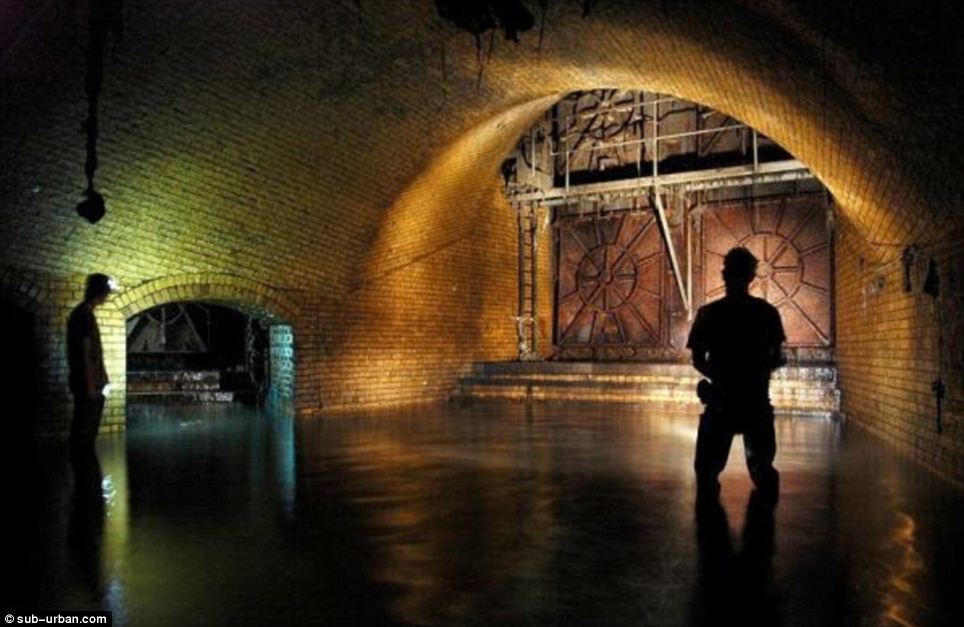
Buried rivers are cool. So cool that I was inspired to write a novel about the people who live above them. But there’s nothing fictional about the lost rivers that run underneath London. Here are some of the spooky streams that still flow beneath the feet of Londoners today.
The Fleet
the mysterious River Fleet is now so mysterious that you can’t even see it any more https://t.co/jxQmtThJu7 pic.twitter.com/bAcufhe1Em
— TripTide London (@triptidelondon) January 18, 2018
It’s not just the second red property in the board game Monopoly; nor is Fleet Street famous just for being a centre of British journalism – it’s also named for the ancient Fleet river, the largest of London’s waterways after the Thames.
Curiously, it wasn’t named the Fleet for being fast – in fact, the word comes from the Anglo-Saxon term for a tidal inlet, so in the days when the Fleet ran above ground it was rather tidal and slow. As the industrial revolution took hold, and the population of London swelled, the Fleet gained a reputation for being polluted – the means by which dead dogs were flushed out to sea – and it was eventually covered over and became part of London’s sewage system.
Today you can see where the Fleet flows into the Thames by looking under Blackfriars bridge at low tide; you can also see its old course in the curve of certain buildings near Kings Cross station, which were shaped to match its banks.
The Effra
This is the river that inspired my novel (also titled Effra) and it was an inspiring stream back the day. It flowed through South London (you can see where it enters the Thames next to Vauxhall bridge) and was known for being attractive and fast flowing – the name probably comes from the ancient word yfrid, meaning torrent. Queen Elizabeth the First was said to have sailed up it in her barge to visit friends.
In any case, it’s now almost entirely underground, and now loans its name to various streets – Brixton’s Effra Rd, and Brixton Water Lane – spring to mind.
It also flows beneath Norwood. One creepy story tells of a coffin from a Norwood cemetery being found floating in the Thames. However when the cemetery was investigated it was unflooded – the Effra had washed away the earth from beneath it, and carried the coffin away beneath the streets…
Little London discovery: point where the Effra River comes out into the Thames, by Vauxhall Bridge. #secretlondon #secretriver pic.twitter.com/9B2dEXMNGU
— Alec Taylor (@1TakeTaylor) September 5, 2017
The Wandle
The Wandle gave its name to the London suburb of Wandsworth, and needs inclusion in this list simply for the sound of its name… however it’s also one of the few buried rivers that has large parts still above ground, and you can even fish for brown trout in its upper reaches.
The Neckinger
The Neckinger flows beneath Southwark, close to London Bridge, and it’s one of the creepiest of the lost rivers. The name comes from ‘the devil’s neck-cloth’, – a term for the hangman’s noose, because the point at which it joins the Thames was a place the place where pirates were hung. These days Southwark is a trendy part of town, but it still has a grim air of industry and violence, as the photo here shows – it’s what’s left of the Neckinger’s mouth as it rises above ground and enters the Thames.

The Tyburn
The river Tyburn wins the prize for being the poshest lost river, as it now flows directly beneath Buckingham Palace. And despite the fact that it flows entirely underground, you can still see the river in part by visiting Gray’s Antique Store in Mayfair, which has a section of the river flowing through a small culvert in their basement, complete with carp!
{Archive} What to do with a River in your basement: The lost Tyburn River, Grays Antique Store https://t.co/FvS43XFTYV #LoveLondon #Antiques #History pic.twitter.com/Lq5qXIMTtm
— Emma 🥂🥝✈️ (@LondonKiwiEmma) December 27, 2017
Confusingly there is another Tyburn in London – or beneath it rather. But this is the Tyburn Brook, which definitely beats the Neckinger in the creepiness stakes. On the banks of the Tyburn Brook there once stood the Tyburn tree, which was London’s numero uno execution spot – and the site of of countless deaths. These days a nearby Catholic convent is dedicated to the memory of the martyrs who died by that river’s bank…




